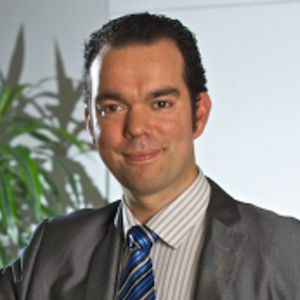
Traditional investing focuses on individual funds, bonds, and stocks. Top-down investing is actually based on a market overview. But, how does an investor know a trend when they see one?
Callum Thomas is the founder and head of research for Topdown Charts, a company specializing in macroeconomic studies. Callum defines top-down investing and explains how data is the most important tool for a top-down investor. He talks about how geopolitical events, could affect data. If you like to stick to the numbers in your financial planning, then tune in to learn more about this analytical investing approach.
Coping with the financial aspect of widowhood
Doug has put together a one-page resource for recent widows and widowers. The loss of a spouse and tough emotions come hand-in-hand. Many people have the extra stress of financial issues. Doug’s resource Answers to Tough Financial Questions for Widows and Widowers is a primer to navigating the financial side of losing a spouse.
Free Download: Answers to Tough Financial Questions for Widows and Widowers
To learn more about Callum Thomas visit Topdown Charts or follow his company on Twitter and LinkedIn.
If you’re not already receiving updates on new episodes, sign up now, and as a special bonus, receive Doug’s free ebook The Retirement Planning Book.
Watch How Top-Down Investing Actually Works on YouTube.
Read the TranscriptInterview with Callum Thomas
Callum Thomas, founder and head of research at Topdown Charts, discusses top-down investing, asset allocation, and various aspects of making good investment decisions.
Douglas Goldstein: I am very excited to be talking to Callum Thomas, who is the founder and head of research at Topdown Charts. Topdown focuses on independent research, and actually a lot of that research is used by pension fund managers and institutional investors.
Who Is a Top-Down Investor?
Callum, I want to start with this question, just to get the definitions before we really dive into your predicting the future. What does it mean to be a top-down investor?
Callum Thomas: That’s a very good question. One good way of defining anything is to look at the opposite of what it is. For a bottom-up investor, they're the ones that are looking at individual companies, individual securities. Whereas the top-down approach is more of taking a broader look, starting at the top. So what are the broader global trends? What are the trends in the individual country? Then, you know, even going down into what’s the trend for the sector?
Personally, I stop at that point because that’s the way I run things. But if you're aligning that up with somebody who’s picking stocks, they're probably going to take over at that point. Then once you’ve identified the country, the rate, and the sector, then they're going to go down and find those individual countries.
But, you know, the way the world is now, with the various investment products out there, you can still actually invest at the top-down, at the bigger picture, or sort of country sector-level investors going down to the individual company.
Douglas Goldstein: The difference, I think, is between the way people look at investing - the way you're describing this top-down and bottom-up. A guy like Warren Buffett for example, when he invests, he focuses a lot on the individual company. He looks at the management and he looks at what they're doing. He really digs in deep because that’s something that you can really understand.
How can someone – and I understand this is your whole business, so I am trying not to be insulting to you by asking – but how can someone possibly understand the big picture at such a huge level when we talk about macroeconomics, which is really so macro?
How Can the Average Investor Understand Big Picture Investing?
Callum Thomas: Yes. It requires a few things. I guess another question that some other people would probably ask too is, how can you do that as a one-man band, which I am? The answer is by focusing on the data. I’ve got lots of spreadsheets here, multiple different charts monitoring a lot of different series.
The more you look at a lot of different information series, there's also this part where you’d pick and tear, build that up into an aggregated, overall picture, which, it’s not like you're out there reading the news and trying to get an overall sense for what’s going on. You're looking at specific data, indicators which help you build up that picture.
There is a lot of skill and a human element in actually interpreting the data, but being data-driven solves a lot of problems on that front.
Douglas Goldstein: I like data as much as the next guy, and I do like to find figures. You know, my day job is that I am a financial advisor, and I do the radio gig once or twice a week. Generally, I am talking to people about the specifics of their investments – how much money do they have? How much money do they earn? What are their expectations?
But when we start to talk about big picture issues, I am talking about a person looking at his own big picture retirement plan. But again, this is totally localized. I am wondering when you look at global events or global economic issues, how do you deal with possibilities that really do come up. Things like war, and famine, or 9/11? Or on the good side, a new invention that’s a real game changer? How can you build that into your data to make it continue to be useful?
Callum Thomas: Yes, that’s a good question. I guess zeroing in on the geopolitical aspect, there’s a couple of things you can do. The first one is looking at their history, and trying to find events that might be somewhat similar or comparable, and then looking at how that impacts the markets.
A lot of the time, and there’s always going to be exceptions, but a lot of the time when you get some geopolitical event happening, like the start of a war, for most markets, it’s going to mean a short-term shock.
That’s where the top-down, the big picture of you, becomes quite important because if your net belief is justified that the underlying economic trends are still fine, then what you're most likely going to see is a rebound or bounce back.
There are two reasons why that’s important; first of all, that you don’t get panicked and sell out at the bottom. The second one is that you re-balance, or you deploy cash when you find opportunities.
It’s about keeping a cool head, and when you're taking this top-down, 10,000 is in front of you, you tend to be able to have a cooler head. Certainly, if you are focused on indicators and data, you can actually have a bit of a cooler head.
Then the other thing too, is looking at whether the market is, or whether the risk indicators are, actually factoring in that possibility. If you're looking at the markets and you're seeing that the valuations are very high, that risk process is very complacent, and your judgment is that the risk of some geopolitical event is very high, then that’s the top of the environment which you tend to think about decreasing your risk exposure.
It is very important to translate these things into the real world, and their practical applications because you can get lost in just thinking about interesting things.
Douglas Goldstein: Right. Too much theory. One of the things you said, which sounded, I think, a little bit like something I say to people, is you used the word “rebalance” or “redeploy assets.” The term that I use with clients is we talk about asset allocation.
For a guy like you, who’s really looking at the big picture, is it important to you to engage in asset allocation as well? Or are you happy to take a position like, “I believe XYZ is happening in the markets, and I am going to put all my coins into that basket?”
Why Asset Allocation Is Important
Callum Thomas: Yes, I am a very big believer in asset allocation. My clients are all big asset allocators. I used to work directly in that end; it’s the biggest driver of your trends. The reason that is, is because at the heart of their asset allocation, the decision is what proportion of your portfolio have you got in risky assets vs. assets that are usually less risky?
When the risky assets are not doing well, that’s when the less risky assets do their job, and when the risky assets are doing very well, they're the ones who produce the returns for you over the longer run.
But there is definitely a place and a lot of value to add by being active in asset allocation as well.
Douglas Goldstein: What does that actually mean? People talk about this active asset allocation.
Callum Thomas: Yes. There are really two ways you can think about it. The first way is from a risk management standpoint. That means adjusting your asset allocation with risk at the heart of your decision-making.
That would mean as you see various indicators of risk rising in the markets, so valuations become very high, sentiment becomes too optimistic, and economic fundamentals start to deteriorate, then you would start to decrease your weighing to anything that’s exposed to that. That means I am selling stocks and putting that into cash or bonds.
The other take on it is just trying to boost the returns and being a bit more aggressive about it. That’s looking perhaps within the buckets, if you think of asset allocation as putting money in different buckets.
So looking at the stock market bucket, you might think, “So do we just put everything into global equities and take the easy road, or do we go around the world and try to find the best markets and try to find a couple of countries that are going to do 20% or 30% vs. 10-15% for the global market, for example?”
Douglas Goldstein: We have certainly gone around the world, Callum, by talking to you all the way in New Zealand. Unfortunately, we’re just about out of time today, but tell me in the last few seconds, how can people follow you and follow the work that you're doing?
How to Follow Callum Thomas
Callum Thomas: Just Google ‘Topdown Charts’. You’ll probably find us on Twitter. Quite active on Twitter @Callum_Thomas and LinkedIn, and we’ve also got a blog. Those are probably the key ways that people can follow us. If you're interested in looking at some of what we do a little bit more closely, then you can send us a message via the website.
Douglas Goldstein: Okay, we will put a link to all of that at the show notes of today’s show at GoldsteinonGelt.com. Callum Thomas, thanks so much for taking the time.
Callum Thomas: My pleasure.










